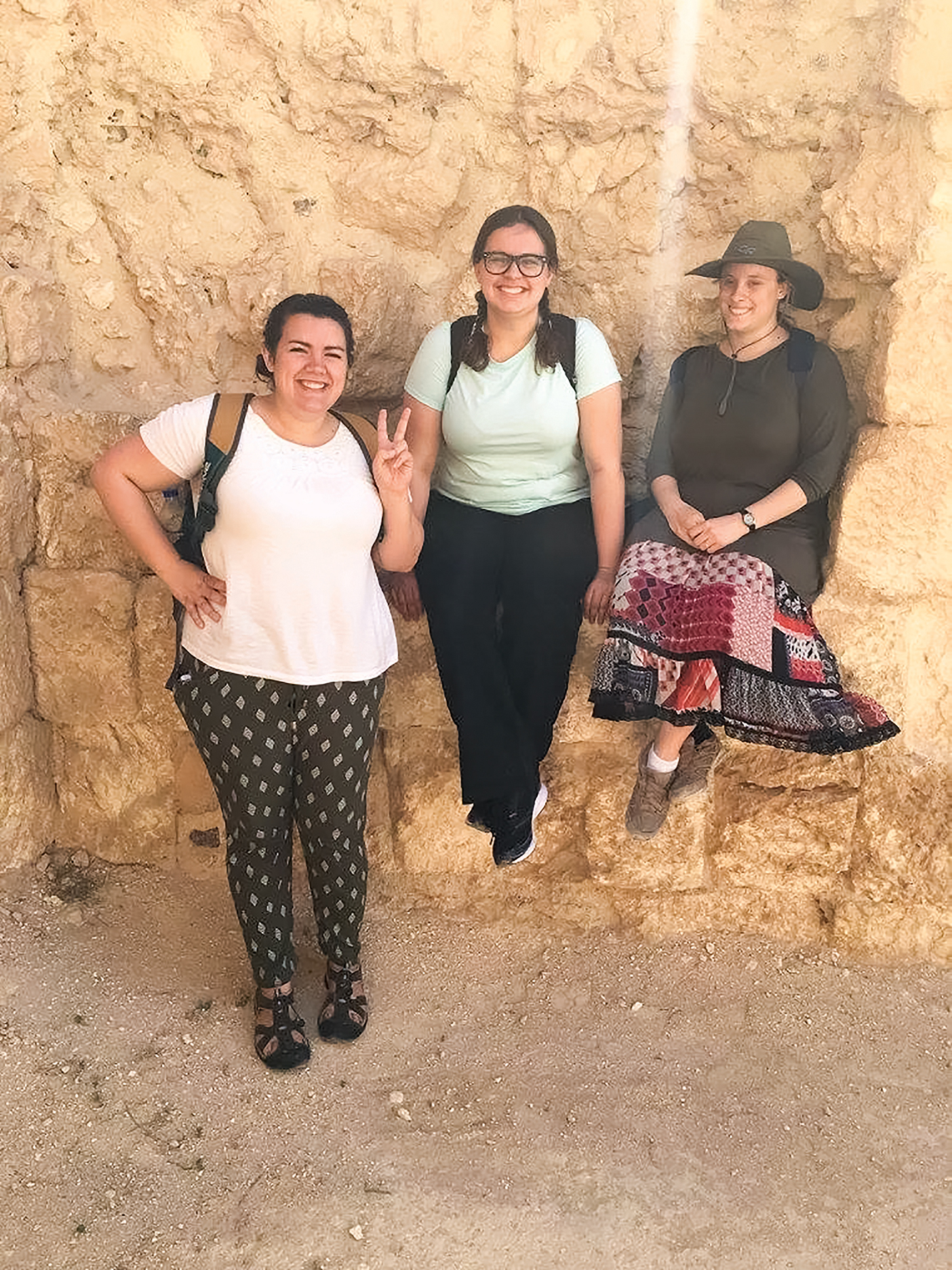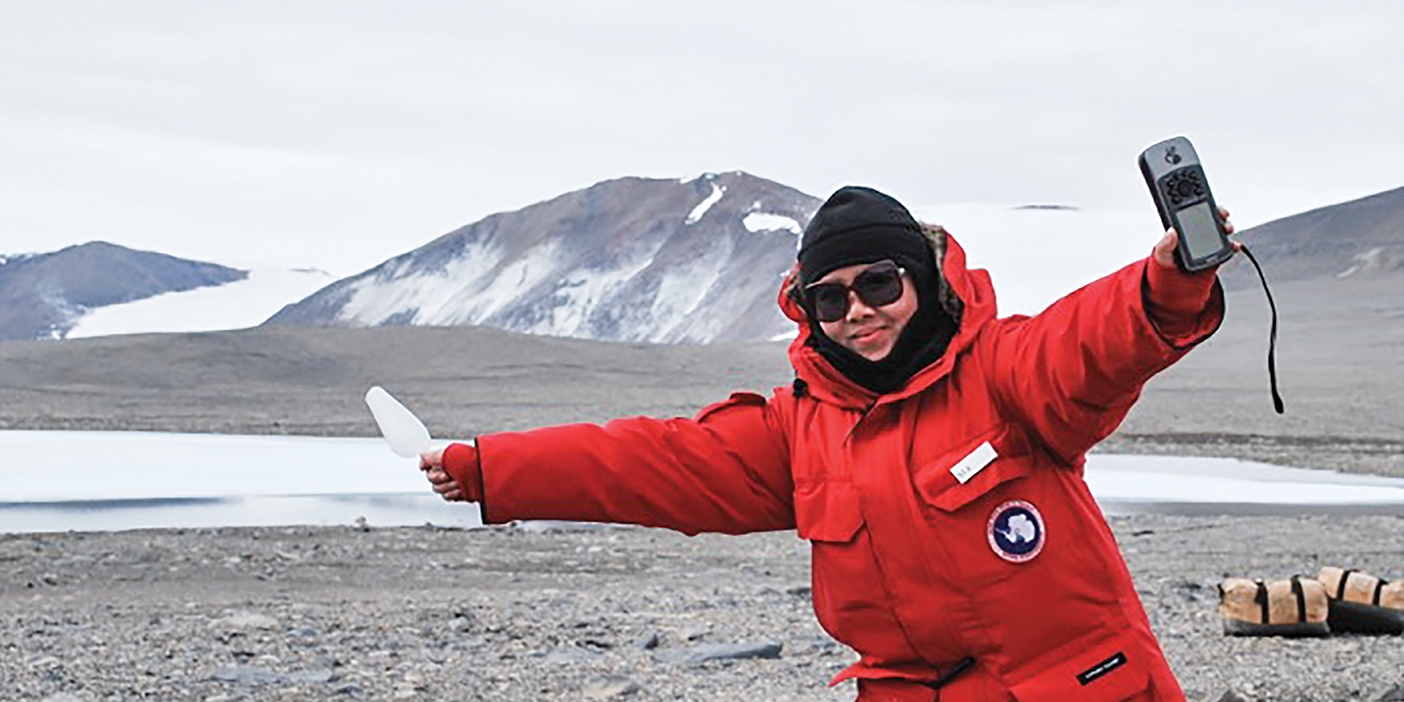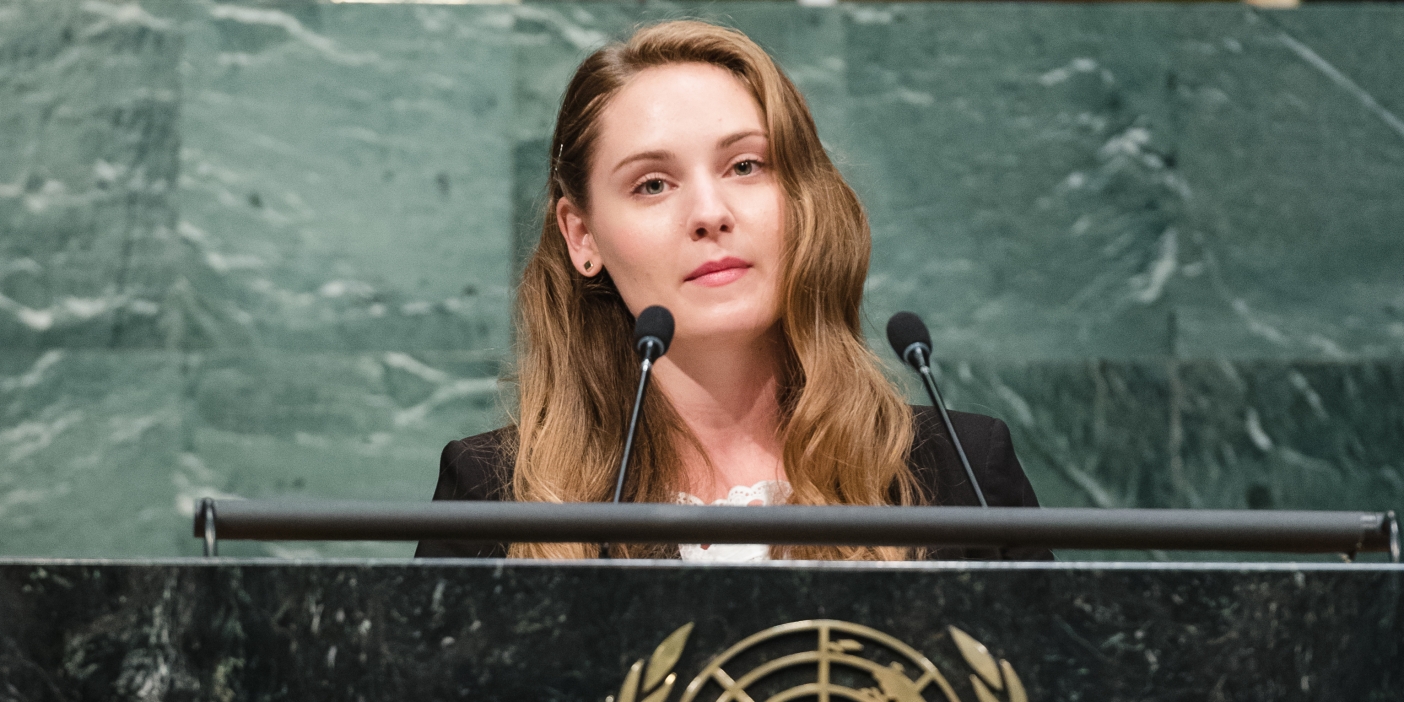President Kevin J Worthen announced a new “Inspiring Learning” priority at BYU—an emphasis on experiential learning. We searched high and low for examples of this kind of learning taking place already at BYU. The following is one of eight. Find the full feature here.
This wasn’t the plan. The plan involved sitting on a brightly lit stage in a black dress, drawing a bow elegantly across her cello’s strings. Instead, for a month last summer, a sweat-and-dirt-encrusted Hannah C. Lambert (’17) found herself sitting in a dusty pit in Galilee, her instruments a pickaxe and a trowel. Her audience? Curious cows and horses grazing in fields surrounding the archaeological dig. This wasn’t the plan, yet Lambert calls it “an unbeatable experience.”
Following a sophomore-year diagnosis of cubital tunnel syndrome and four surgeries, Lambert reluctantly let go of her music-performance ambitions, eventually settling on ancient near-eastern studies and biblical Hebrew. Last winter Matthew J. Grey (BA ’03), an ancient scripture professor, tipped off Lambert and four other students to an opportunity through the Jerusalem Center for Near-Eastern Studies to join him and University of North Carolina archaeologist Jodi Magness in field work. For five summers Grey and Magness had been excavating the site of a fifth-century synagogue in Huqoq, Israel. In the dig’s second year, a BYU grad had garnered international attention when he happened upon mosaic tiles depicting biblical scenes, and additional mosaics had been found each succeeding digging season.

Assigned to 5-by-5-meter plots, the team of students and experts from around the world scraped and sifted through historical strata: from the remains of a modern village, through Ottoman and medieval layers, down to the now-famous floor of the Late Roman–era synagogue.
Lugging dirt, taking elevations, and making daily sketches, Lambert and her peers were constantly on the lookout for discoveries—bones, coins, pottery sherds, or structural remnants. This year the team uncovered mosaic scenes of Noah’s ark and the Exodus.
But Lambert’s most important summertime discovery just might have been about herself: “It gave me that experience to say, ‘I could see myself doing [this],’” she says. Now exploring graduate schools, she has a new plan—one that brings her two loves into harmony: archaeomusicology, the study of ancient music through artifacts.
Find the full story on President Worthen’s “Inspiring Learning” priority here.












